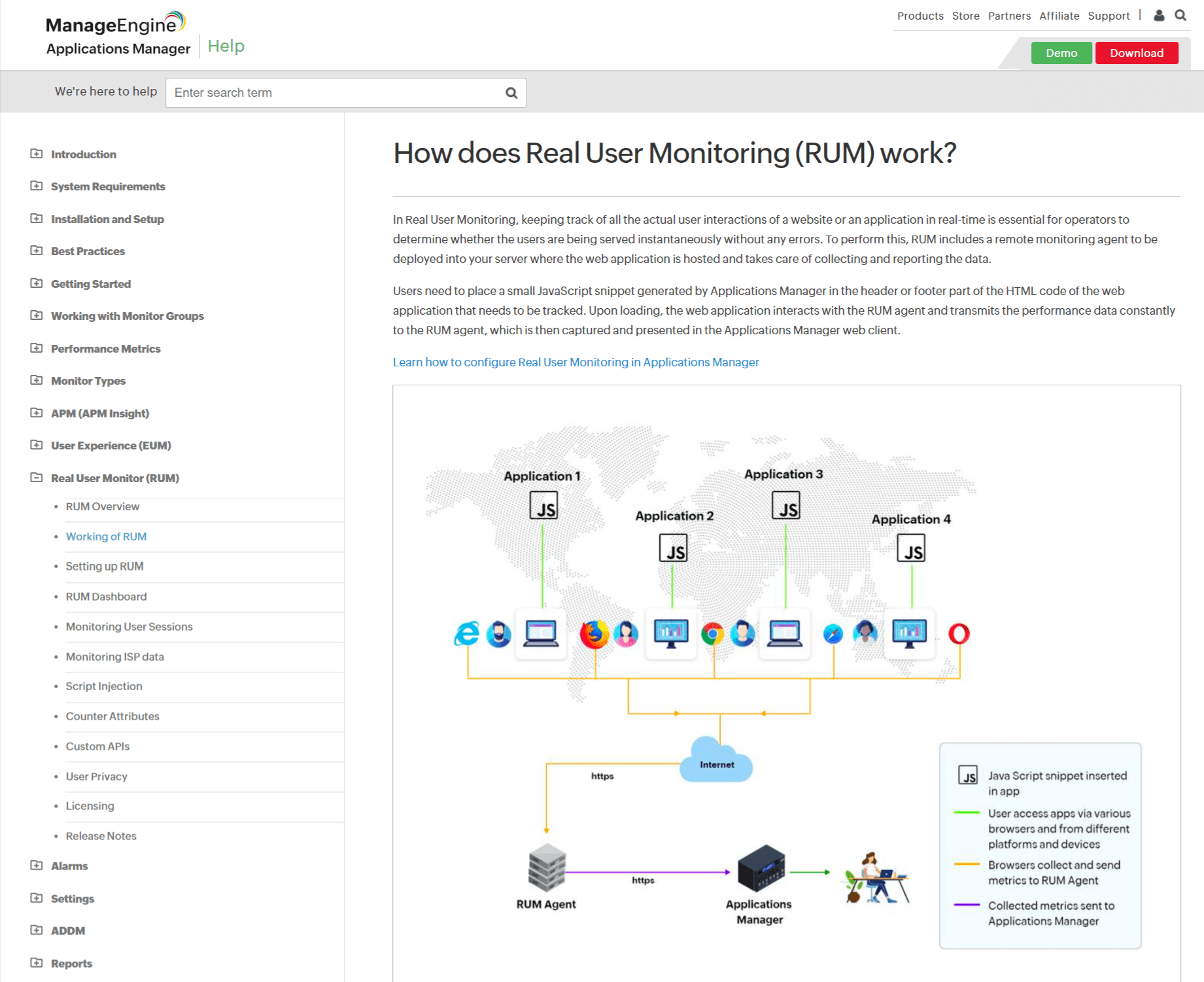
In the sales world, the ability to quickly harness and communicate critical information can be the difference between closing a deal and missing an opportunity.
This is where sales documentation can help.
According to a Forrester report, 97% of organizations had minimal digital document processes, leading to inconsistent messaging across sales teams and the loss of crucial deal-related information.
Sales documentation addresses this problem by centralizing data like product details, pricing strategies, customer testimonials, and competitive analyses.
In this blog, we will learn how to create sales documentation, discuss its types, and explore some real-life examples. We will also understand how sales documentation software can help create detailed sales documentation.
| Related blog: How to Create Online Documentation? |
What Is Sales Documentation?
Sales documentation equips your sales team with all the information and resources they need while interacting with prospects and existing customers. It provides them easy access to sales collateral, including case studies, product and service information, PPTs, and much more, so they can make the right pitches and close deals quickly.
With a structured sales process and other necessary resources at your sales team’s disposal, they are better positioned to answer prospects’ questions, upsell products, and build lasting customer relationships.
A product datasheet is an example of sales documentation – it provides detailed information about a product’s features, specifications, benefits, and potential use cases. It serves as a crucial tool for sales teams to communicate the value proposition of a product to prospects and customers clearly and concisely.
It usually includes technical details, pricing information, compatibility information with other products, and sometimes customer testimonials to reinforce the product’s value. It helps prospects understand how a product can meet their needs and helps sales teams address queries more effectively.
What Are the Types of Sales Documentation?
You can create multiple types of sales documentation depending on your business requirements.
Let’s look at a few of the most common documentation types.
Sales Training Documentation
Sales training documentation is meant primarily for new hires in your sales team. It contains basic information about your company and its approach towards sales, the kind of clients you cater to, and the do’s and don’ts to remember while selling.
It also has a lot of how-to training videos to guide new hires through your sales process and prepare them for the challenges ahead.
Sales Process Documentation
Sales process documentation is where your sales team can find industry-relevant best practices; the sales process your organization follows, and practical strategies to sell better.
It is a great document to teach your sales team what they should or shouldn’t do in specific situations and how to put their best foot forward in every interaction.
Sales FAQs
You can create a separate document for sales FAQs. This is where employees can find instant answers to the most common questions people tend to ask sales teams.
Referring to this document during interactions will help your sales people respond promptly and positively interact.
| Related blog: How to Create an FAQ Page: Steps & Examples |
Sales Collaterals
You can also have a separate document for all the sales collaterals your sales team needs during their interactions with prospects. This document can include case studies, product demos, competitor analysis, pricing documents, how-to videos, PPTs, and more.
What Are the Benefits of Creating Sales Documentation?
Your sales reps might know how to conduct impromptu conversations. But as human beings, we tend to forget things. A sales document ensures that sales people have immediate access to limitless information that can be used to communicate smartly with customers.
This core functionality of sales documentation brings multiple benefits to businesses, such as:
Refined, Well-Executed Pitches
To make the right sales pitch, your reps should be well-versed with your products, customers, current market conditions, and ongoing trends. With sales documentation in place, reps will have all the assistance they need to create compelling pitches that leave the right impact on customers.
Not just that, the documentation also provides access to some high-value pitches used in the past that were successful in winning deals.
Close Deals Faster
With an unbounded knowledge resource at their fingertips, sales reps are better able to do their job. They know what to speak and when, what information to divulge in a particular situation, and how to take conversations on the right track.
This helps them cater to customers with the right messaging throughout the sales cycle and win them by using the right words at the right time. With deal closures happening faster, your business gets a steady flow of revenue, boosting your bottom line.
Provide Quick Responses
Response time has the power to make or break the customer experience. A little delay in giving answers could cost you a high-paying customer. And if you respond just on time, prospects’ interest in your business amplifies significantly.
In fact, if research is to be believed, sales conversions are a whopping 391% higher in the first minute of responding. With an informative sales document, your reps can assist leads by answering their questions and addressing any concerns they may have in a timely manner.
They do not have to waste time scrambling for information across Google Drive or emails, as everything they need to serve prospects is available on a centralized, easy-to-access platform.
| Related blog: 15 Best Sales Email Templates to Generate Maximum Leads |
Build Relationships That Last
A sales representative who knows the customer’s name, pain points, needs, and preferences has a clear edge over someone who reads a ready-made pitch. That’s where sales documentation plays its part.
It ensures that your agents have all the required information to make meaningful connections with prospects, which eventually increases the chances of sales, if not now, then in the near future.
What Are the Steps to Create Effective Sales Documentation?
Creating sales documentation is no rocket science. All you need to do is follow the steps below, and you will be well on your way to launching your sales document.
1. Determine Your Purpose & Goals
This is the very first step that will lay down a solid ground for the rest of your journey. ou should have your purpose and goals crystal clear before you start the documentation process.
Ask yourself a few questions to come to a definite answer about why you need a sales document:
- Are you worried about your sales team’s productivity and want to do everything possible to improve it?
- Is the declining sales figure your top concern, and are you counting on your sales documents to solve this problem?
- Do you want to support your sales team and empower them to win clients for the long term?
Clarifying your goals and purpose will help your documentation team head in the right direction.
2. Seek Support From Different Teams
Creating sales documentation is a collaborative process. A single person or team cannot achieve the quality that multiple individuals working together can.
The depth and breadth of information demanded by sales documentation can be achieved only when different teams – marketing, support, product, etc., come and work together as a unified family.
For instance, the support team can share the challenges customers frequently face. While the marketing team can offer insights into the product’s performance and buyer behavior, the product team can peek into product features, functionality, risk areas, and more.
Your sales team can leverage these insights and translate them into effective actions that drive better sales.
You can assign separate roles based on what fits them best to maintain harmony and collaboration between team members. For example, subject matter experts can be given the role of contributors, and managers can be assigned the administrator’s role. Those at the senior level can be assigned editorial duties.
When each member knows what they are accountable for, there will be minimum confusion and maximum output.
3. Add All Crucial Information Your Sales Team Needs
Now, your team should start creating content on all important topics related to the sales function, such as:
- The sales process
- Onboarding checklist for new hires
- Product demo videos
- Training material
- FAQs
- Sales scripts for both calls and emails
- Customer case studies and more
You can also mention the different techniques to steer conversations positively and convince prospects to go for your product. Additionally, upselling and cross-selling can be added to your sales document.
To make things easier for your sales team, you can segment prospects into broad categories, describe them in detail, and provide strategies for targeting. Not every customer will trust everything your sales team members say. Some of them will object by asking your reps tough questions.
Your documentation should teach how to handle objections related to pricing, product features, maintenance, and almost anything that customers are doubtful about.
4. Enhance Engagement With Images, Videos & Examples

Sales documentation is a one-stop platform that is meant for frequent use by your sales team. During customer interactions, salespersons do not have the time to dig deeper, browse through each article, and spend hours finding a piece of information. That would be counterintuitive, defeating the primary purpose of creating documentation in the first place.
You can use many images, videos, and examples at the right spots to help your sales team grasp concepts faster without reading an entire article. Instead of reading a full paragraph about product features, they can simply watch a video and answer customer questions immediately.
Moreover, adding visuals to your documentation is a good way to improve engagement with your content and provide more information in less time.
5. Publish Error-Free Content as a Help Site Across Devices
With one wrong piece of information, you risk losing your hard-earned customers. Now, that can be a lifetime of regret! The sales team must have the exact information at their disposal, which can be done by setting up a review workflow and approval process.
You can publish your knowledge base content as a professional, searchable help site to make it easily accessible to users across all devices. This will help you provide instant, self-service support to customers and reduce the volume of support tickets.
You can set up permissions to restrict access, allowing only the sales team to view specific content. Monitoring feedback and tracking failed searches facilitate continuous improvement based on user interactions and needs. This ensures that your help site remains up-to-date and highly effective.
6. Keep Updating & Improving Your Sales Documentation
Sales documentation cannot be a static information resource. As your business grows, products develop, services expand, and processes improve, your documentation should also change for the better.
Moreover, your sales team’s requirements will change over time. If they read a particular article the most two years ago, this year, depending on their conversations with your customers, they might look for information on other topics.
A built-in reporting system is a critical feature most document collaboration tools offer today. Using reports, you can unlock thoughtful insights into:
- What questions do your sales team members search for but do not find the answers to
- The search keywords that fail to deliver the correct answers
- The articles rated poorly by your sales team
- Inactive or broken links, and much more.
These insights help you monitor how helpful the sales documentation is for your sales team and whether it brings value to their work.
For example, suppose your sales team frequently searches for answers to questions such as how to handle frustrated customers, what to do when a customer is unwilling to accept the information provided, etc. But your documentation fails to deliver the right answers to these questions.
This shows that “dealing with angry customers” is a common challenge for your sales team members that your documentation does not address.
What can you do in this case? You can use this valuable information to make informed decisions and improve your sales documentation.
What Are the Best Practices for Writing Sales Documentation?
The above section mentions the straightforward steps to create a sales document. But there is so much more you can do to take the performance of your documentation to a whole new level.
Here are some best practices that you can incorporate into the process to achieve top-notch results:
Craft Impeccable Content

Content forms the heart of a sales document. For your sales team to confidently do their jobs, the sales documentation should equip them with the most updated and flawless information.
For example, if there is a change in your sales process or you want your sales team to upsell or cross-sell a few products, mention it clearly in your sales documentation.
Providing meaningful content improves how your sales team interacts with customers and makes daily decisions.
Add a Feedback Section at the End of Every Article

Feedback is essential in boosting the quality of your documentation. It also makes the concerned team feel more involved in document development.
Your sales staff is the best judge of your sales documentation, and they might have brilliant ideas for improving its design, structure, and content quality. Their suggestions, feedback, and ideas can be game-changing for your documentation.
Capturing feedback in your documentation is super easy. All you need to do is add a feedback form comprising the question – “Did you find this article helpful?”. The answer options can be Yes/No. When someone selects No, a list of possible reasons will appear along with a comment box.
Make Your Document Easy to Search

Your sales team needs quick access to information to target prospects with the right messaging at the right time. Sales professionals cannot spend hours looking out for something, especially when they are in the middle of a call, email, or social media conversation. Their job requires them to have the most updated information to sell better and faster.
That’s where searchability plays its part. Your sales documentation should have a powerful search system and a clearly visible search bar that delivers the right responses to the questions asked.
For your search system to display relevant results, ensure your content has the right keywords and tags. The search system automatically displays matching pages and articles whenever someone searches for those keywords or questions containing similar tags.
Provide Easy Accessibility on Mobile Phones
A mobile-friendly sales process documentation can enhance the productivity of your sales team.
No matter the time and place of work, sales people can refer to your documentation anytime. This means they will never miss the opportunity to contact prospects and make sales.
Here are a few hacks to make your documentation work well on mobile devices:
- Avoid using tables in the content, as every mobile device does not support them
- Choose your font type clearly, as not every font displays clearly on mobile phones
- Do not fix the breadth and width of images. Let them shrink and expand automatically according to the screen size
With the convenience of finding information on their mobile phones, your sales team members can better carry out conversations and close deals on the go.
Examples of Sales Documentation
Effective sales documentation is well-organized, easily accessible, and regularly updated to reflect current product information, sales tactics, and market intelligence.
Let’s look at some such examples.
ProProfs Knowledge Base

ProProfs Knowledge Base adopts a clear and systematic approach to writing case studies, focusing on demonstrating real-world applications and successes of their solutions.
See the above Orchestrade case study, which outlines the challenges of managing their knowledge base and customer support documentation. It then delves into the solution segment, where they describe how their Knowledge Base software was implemented to address the identified challenges.
The narrative is supported by specific features of Orchestrade, such as the easy-to-use editor and the powerful search functionality, providing readers with a clear understanding of how ProProfs Knowledge Base can be applied effectively.
RMS

RMS’ approach to writing sales documentation, as shown in their ‘RMS Pay Functions’ features documentation, conveys a comprehensive, detail-oriented, and user-centric methodology.
It begins by offering a brief overview of the service, presenting the essential functions and advantages of using RMS Pay within the context of their property management system. This introduction is crucial as it sets the stage, highlighting the relevance and value of the product to the target audience.
Focusing on detailed explanations of each feature, the documentation breaks down various functions like processing payments, setting up account tokens, and managing pre-authorizations.
Riscure

Riscure’s approach to sales documentation emphasizes technical precision, comprehensive detail, and clarity. Its strategy is tailored to meet the needs of its technically sophisticated audience, which includes security professionals and organizations concerned with hardware vulnerabilities and testing.
The documentation stands out for its emphasis on technical specifications. The VC Glitcher document meticulously details the device’s features, capabilities, and system requirements. This includes information on the types of glitches it can generate, the interface options available, and the software requirements.
Grow Sales & Boost Your Bottomline With Sales Documentation
If there is one thing that every business is worried about, it’s sales. It is the major source of revenue for the smallest of setups and the largest of companies. It’s the heart of a business.
Sales documentation sounds like a simple tool, but it can substantially value your business. Your sales team needs constant support that’s available 24×7. A sales document gives them everything they need – product details, sales scripts, case studies, etc., to woo customers and convince them to buy your product.
Well, ProProfs Knowledge Base can help, with its 100+ pre-approved knowledge base templates, to get you started with content creation quickly. It lets you import Word docs, PDF files, PPTs, and more into your knowledge base.
FREE. All Features. FOREVER!
Try our Forever FREE account with all premium features!







